
To help you serve the best steak possible, we will teach you today how long to rest steak for optimal results after cooking. We’ll also tell you WHY you should rest your steak, its benefits, and what happens if you don’t rest your steak.
The older I get, the more I realize kids that fight their nap time are daft! What I wouldn’t give to have the hours in a day to catch a few extra winks! At best, I can try to take a few minutes to rest after I’ve been working hard. But it’s better than nothing and leaves me feeling closer to my best self.
Cue the segue.
And, did you know your steaks are also better after a short rest? It’s true!
We’re all after that perfect steak experience, and the vital information in this guide will help you get there.
Ready, set, REST!
Key Takeaways
- Resting your steak after cooking allows more of the juices to remain inside the meat, resulting in a juicier, more tender, and more flavorful steak.
- The optimal resting time for steak is the time it takes for the center of the steak at the thickest part to cool down to 120 °F (49 °C).
- The rule of thumb is to rest steaks for 5 minutes per inch of thickness: 5 minutes for a 1-inch steak, 7.5 minutes for a 1.5-inch steak, 10 minutes for a 2-inch steak, etc.
- Resting allows the temperature gradient between the surface and center of the steak to normalize, redistributing juices throughout the meat for a juicier and more flavorful result.
- Resting also allows for carryover cooking, where the residual heat continues to cook the steak from the hotter outside to the cooler inside.
- All steaks, regardless of cut, should be rested after cooking.
- Tenting your steak in foil can help keep it warm during resting, but it should be done loosely to avoid overcooking and condensation ruining the crust.
- You cannot rest a steak too long, but it will result in a cold steak, and there is no benefit to resting past the point where the center cools below 120 °F.
Jump to:
- 1 Key Takeaways
- 2 How Long to Rest Your Steak for Optimal Results
- 3 Why Rest Your Steak After Cooking?
- 4 What Happens to Steak During Cooking So it Needs Resting?
- 5 What Happens During the Resting?
- 6 Why is Resting a Steak Until the Center Cools to 120 °F Optimal?
- 7 Do all Steaks Need Resting After Cooking?
- 8 How to Rest Your Steak: Should You Tent it in Foil?
- 9 What Happens if You Don’t Let Steak Rest Long Enough?
- 10 Can You Rest Steak Too Long?
- 11 Conclusion
How Long to Rest Your Steak for Optimal Results
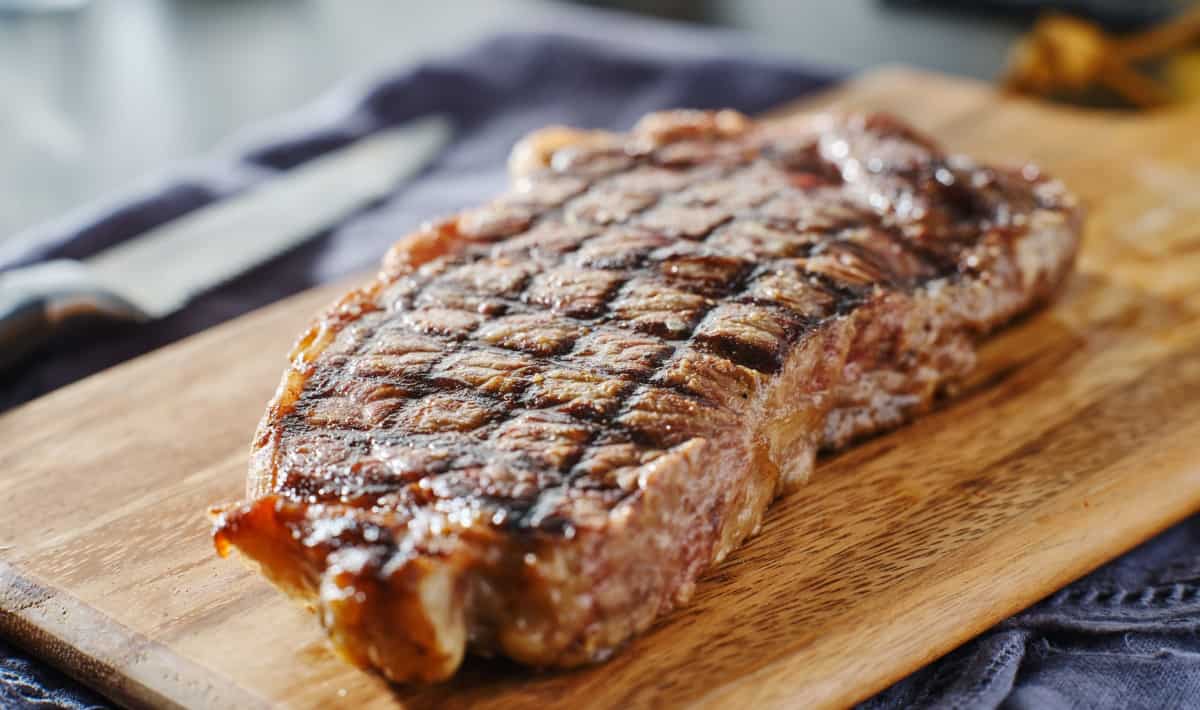
The absolute best resting time for steak varies depending on the steak type and thickness. But it is always the time it takes for the center of your steak at the thickest part to cool down to 120 °F (49 °C). I will give you an explanation for this further down.
But first, and for those of us who aren’t going to monitor our resting steaks with a thermometer waiting for the green light (which is all of us, I’d imagine?) Here’s a quick reference list for how long to rest your steaks for optimal results:
- For any steak that is 1 inch thick or less, rest for 5 minutes before eating.
- For any steak between 1 and 1.5 inches thick, rest for 7.5 minutes before eating.
- For any steak between 1.5 and 2 inches thick, rest for 10 minutes before eating.
- For any steaks thicker than 2 inches (perhaps prime rib), rest for 5 minutes per inch of thickness.
There are many opinions, guidelines, and rules of thumb (rule of thumbs?) out there. I’ve tried them all, and the above list is what I’ve settled on and concluded as the best advice. Five minutes resting period for each 1 inch of thickness, which is 7.5 minutes for a steak with my recommended best thickness of 1.5 inches.
Now, different steaks take different times to cook, so another theory is you need to rest them for different times. But honestly, 5 minutes per inch is close enough to optimal that you won’t see or taste enough difference to make a minute nor two either way mandatory or worth it.
You also have steaks cooked blue, that barely touch the pan and only need a minute or two to rest, but the people who eat steak blue are few and far between.
Now that you know how long to let steak rest, let’s learn the ins and outs of why we’re doing it, and how I arrived at the times given above.
Why Rest Your Steak After Cooking?
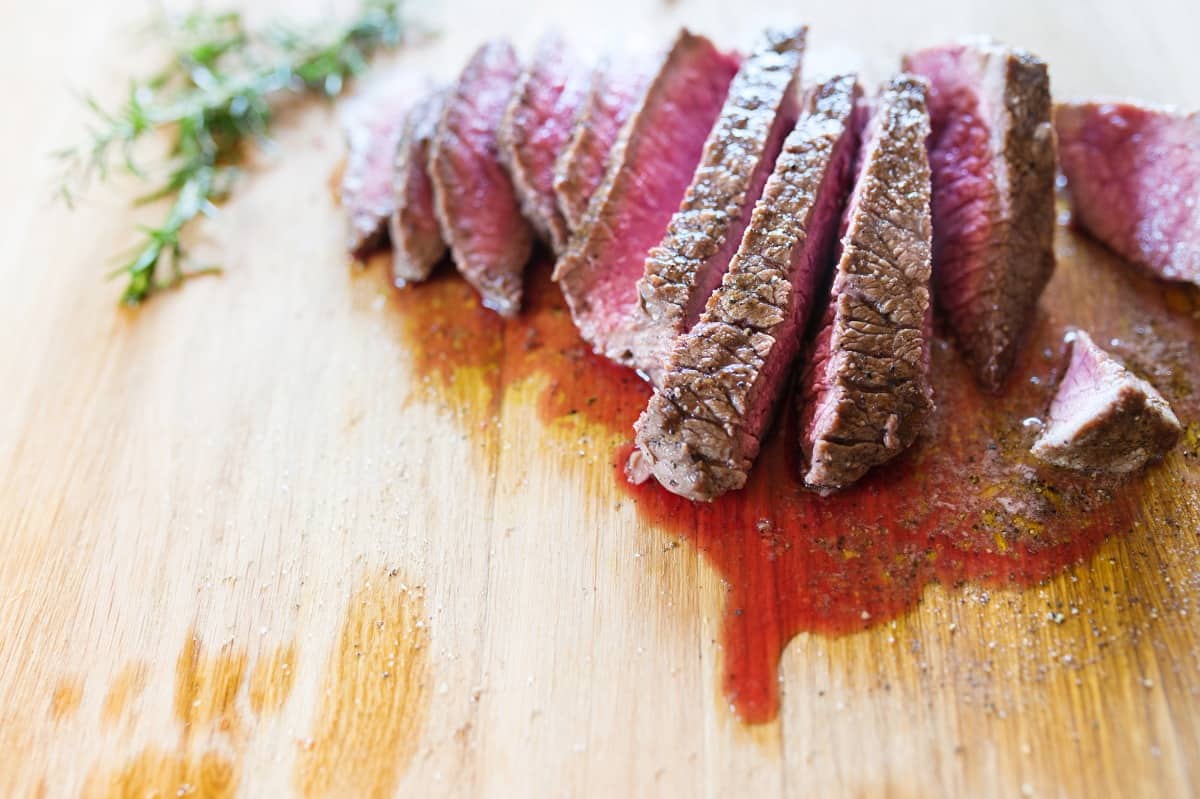
We rest a steak after cooking because doing so allows more of the steak’s juices to remain inside the steak instead of spilling out when sliced. Keeping more of the juices inside the steak results in a juicier, more tender, and more flavorful steak.
Here’s something I’ve learned about marketing: what looks good sells; but, what looks good isn’t always what’s best.
For example, if you cut into a steak and juices flow out and create a puddle on your plate, you think, “Wow, what a tender, juicy steak! This will be delicious.” And yes, it was a tender and juicy steak — right up until you let all the moisture out.
It might still be ok, but it won’t be as good as it could have been if that moisture had stayed inside the meat.
So what’s happening here? Why do the juices flow out when the steak is sliced, and how does resting help prevent this?
What Happens to Steak During Cooking So it Needs Resting?
Meat is muscle, and muscle is full of bundles of protein fibers that expand and contract as needed when the brain asks the muscles to work.
Exposing the fibers to high heat during cooking also causes them to contract. Contracting fibers squeeze out moisture (raw beef is about 75% water), forcing some out toward the surface, where it is boiled away during cooking, and some towards the center of the steak.
So now, if you cut into the steak right away while the outer muscle fibers are still super hot and contracted, juices get squeezed out onto your plate.
What Happens During the Resting?
I’m afraid the jury’s still out on this one, but the most widely accepted theory is the one floating around from the highly highly respected j. Kenji López-Alt of the SeriousEats food lab.
Kenji says that once the steak comes away from the heat, the temperature gradient between the surface and center normalizes and becomes closer to even over time.
Then, because there is an imbalance of juices throughout the steak, with most of it in the center, as the surface cools and the protein fibers begin to relax, juices redistribute themselves throughout the meat.
That means when you cut into it, the bulk of the fluids will stay in the meat instead of leaking onto your plate. You’ll enjoy a far juicier steak, with a better mouthfeel and more intense flavor.
Carryover Cooking
Something else that happens during resting your steak is Carryover Cooking.
If you sear your steak at, for example, 450 °F, the surface of your steak is in direct contact with this heat and can easily get up over 250 °F, while the interior stays at 125 °F if aiming for medium rare.
This surface heat doesn’t simply disappear when you take your steak off the grill or out of the pan. The residual heat will continue to cook your steak from the hotter outside to the cooler inside while it rests until the temperature equalizes across the steak. During the resting, carryover cooking can cause an internal temperature rise of a further 5 °F or so, which is why you are always advised to remove your food before you hit uour target temp.
Give our article a read on Carryover Cooking: What Is It and Why Is It Important to learn more.
Why is Resting a Steak Until the Center Cools to 120 °F Optimal?
If you check out the article ‘The Importance of Resting Meat’ at Serious Eats, J. Kenji López-Alt ran an interesting experiment.
He cooked 6 identical steaks to a medium rare internal temperature of 125 °F, then sliced one of the steaks every 2.5 minutes and placed them on a plate to collect any leaked juices to see what difference resting made.
He also weighed the steaks before and after cooking and resting to see how much weight loss occurred due to the cook, and how much due to juices that leaked out after slicing.
The results of this experiment are fascinating.
- The steaks lost 13% of their weight during cooking. This is a combination of rendered fat and moisture loss.
- The steak sliced as soon as it came off the grill lost a further 9% of its weight due to juices running out onto the plate (22% overall.)
- The 3 steaks rested for 7.5 minutes or longer only lost a further 2% due to juices running out when sliced (15% overall.)
The conclusion is that by resting your steak sufficiently, you can limit lost juice to just 2% of the total weight of the steak instead of 9%. That is 7% extra juiciness kept in the steak by resting correctly. Wow!
The article goes on to discuss how the optimal point at which the least juice is lost during slicing is when the internal temperature has cooled to 120 °F, and the surface close to this at 125 °F. Any cooler and there is no extra juices retained.
So the optimal resting time for steak, regardless of thickness, is to rest until the internal temperature cools to 120 °F for maximum moisture and juice retention. I love the scientific way Kenji arrives at this definitive answer.
Do all Steaks Need Resting After Cooking?
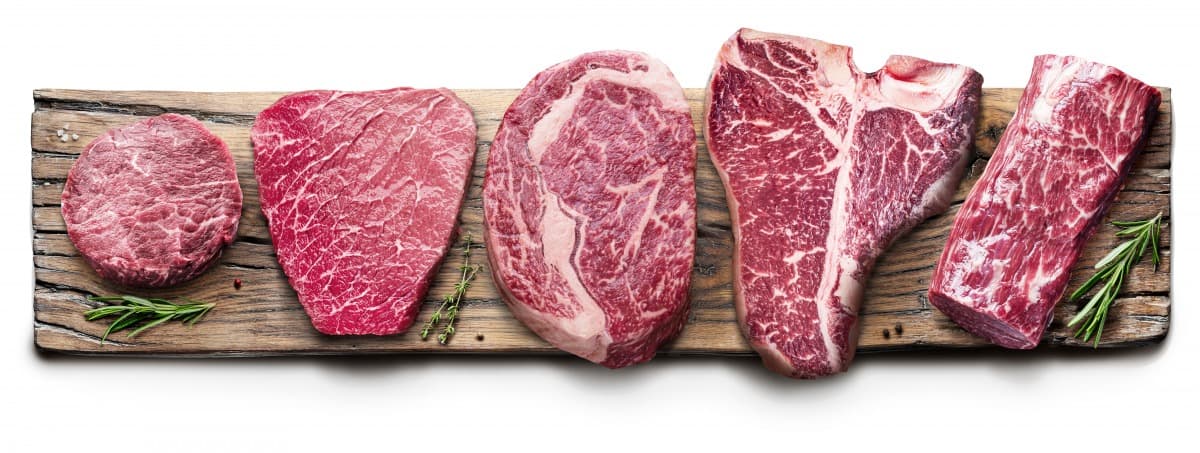
Yes, we recommend resting all your steaks, no matter the cut. This especially applies to the best thick, juicy steaks for grilling (1½ inches is optimal). Though you could probably sear a very thin steak (½ inch or less) and then dig right in without losing much fluid or flavor.
And if you are one of those people who like a well-done steak, by the time you’ve cooked it that much, there isn’t much moisture and tenderness left to preserve.
How to Rest Your Steak: Should You Tent it in Foil?
Tenting a steak with foil can be beneficial for keeping it warm and ensuring even resting, but it should be done loosely to avoid overcooking and moisture accumulation.
The foil will help keep the steak warmer as the heat from the surface slowly permeates into the center and helps to promote a more even temperature gradient throughout the steak.
However, you should only tent it very loosely because if you wrap it tightly, no air can circulate, and the steak may overcook from too much heat being retained. But worse than this, condensation can build up inside the foil, causing the seared crust to go soggy.
However, personally I don’t wrap my steaks in foil for resting. I have done it both ways, tented in foil and without, and I cannot notice a difference, so I’d rather save the hassle and foil. So how do I recommend you rest your steaks?
“Resting steaks ain’t like dusting crops, boy”
— Han Solo
Ok, so the captain of the fastest hunk of junk in the galaxy didn’t say that. But I can imagine he’d be intense around the barbecue. Regardless, here’s a step-by-step list of how I rest a steak.
- Remove the steak from your pan or grill.
- Place the steak on a clean plate, platter, or cutting board. (Never reuse the plate you brought the raw steak to your BBQ on.)
- Leave your steak uncovered someplace safe from bugs, pets, impatient guests, etc. (Some people tell you to tent it with aluminum foil, but naked on the counter is just fine…For your steak.)
- Do something else until the required rest time elapses.
- Serve the now perfect steak immediately.
What Happens if You Don’t Let Steak Rest Long Enough?
As I said earlier, the contracting fibers in a cooking steak cause the water and other fluids trapped inside the meat to concentrate near the middle. When you slice into the steak with your knife, all that collected moisture (and flavor) escapes onto your plate, leaving you with a less tender, less tasty cut of meat.
The effect of slicing right away without letting steak rest is not huge, but it’s there, and it does make a noticeable difference, with some steaks more than others. So just rest them all.
Can You Rest Steak Too Long?
You can’t rest a steak for too long, no. The worst that could happen is your steak is no longer warm when you go to eat it. Which does suck, of course. If that happens, and assuming you haven’t left it so long that it’s not safe to eat (about 2 hours), try tossing it on the grill again for a minute or so on each side just to get that sizzle back.
However, there’s absolutely zero benefit to resting a steak past the dead center cooling below 120 °F, so you might as well stop there and enjoy your steak as hot as it can be.
Conclusion
The simple technique of resting steak (you’re literally doing nothing) makes a huge difference to the juiciness, taste, and everyone’s enjoyment of the meal. When it comes to steaks, patience is a virtue that pays off.
Everyone at FoodFireFriends believes that understanding the science of grilling makes you a better, more confident barbecuer. Thanks, for trusting us with this part of your BBQ education. Be sure to check out our other skill-enhancing articles to make the most of your grill time.
Now, go rest up from all this learning!


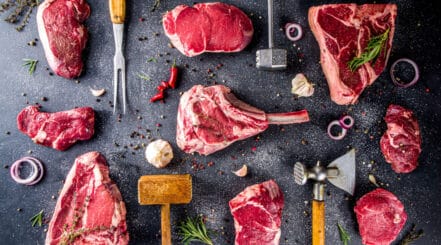
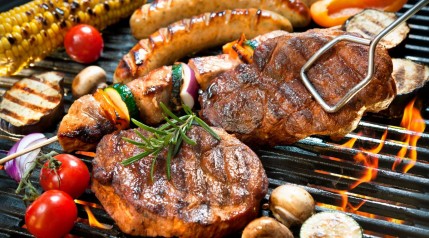
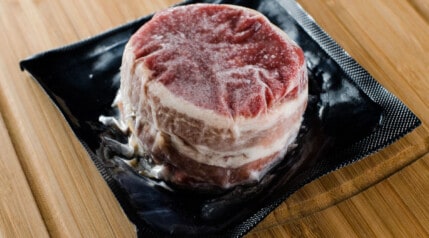

0 Comments